QuestionWe adopted a small 2 year old pointer mix(not sure of other breed) from a rescue service. The dog was found with the rest of its litter in a trailer and had not been fed in a long time. Her foster mom got her to a good weight but still really thin. She is basically scared at all times, she is constantly shaking, running away, or just curling in a ball any time we go near her. Her foster mom said she liked being picked up, however when we do she usually tries to run away or resists. Her foster mom said that she did not have any problems with her after a day or so. The dog does like to be around us though, she will follow us around but stay at a distance. I have two questions really: 1) how can I help her be not so scared?
2) She will only eat,drink,potty when we are not there. We tried to crate her when we left the house but she would not eat or drink at all. If we take her on walks she will be scared the whole time and not go, no matter how long we are outside. Once back inside she will hold it until she is alone in the house and go right by the door to the outside. We take her out about 4 times a day and we have been putting her in her crate only at night. She is never alone longer then 2-3 hours but when she is alone she will go to the bathroom next to the door. How can we get her to go outside and eat/drink when we are around? She will not even eat treats of anykind.
AnswerHi Kevin,
It might take a month or longer before the dog you adopted will begin to feel more at home, and gain some confidence.
By being gentle and patience your dog will come around. You can help your dog gradually gain confidence. Avoid eye contact with your dog (dogs see direct eye contact as a threat) stay quiet and still, stand sideways to the dog, keeping at an ample distance from the dog. Do not force your dog to approach you. Instead, let the dog initiate contact and approach when she feels ready.
Another non-aggressive posture for you to take is to crouch down or sit on the floor, maintaining the nonthreatening sideways stance, with eyes still averted. Toss your dog small tasty treat, such as a tiny bit of hotdog. Extend a hand in the direction of the dog and drop a treat. Eventually the dog will sniff around and slowly approach. Most likely, the dog will take the treat and retreat a bit to eat it. As you progress with this, leave your hand extended, but not reach at the dog. After a day or two see if your dog will take the treat from your extended hand.
Eventually, your dog will show signs of budding confidence. Ideally, the dog will touch your hand upon taking the treat. Eventually make eye contact with your dog. However, progress slowly to avoid the setback of a fear response. It might take a few of these set-up encounters for your dog to feel comfortable enough to approach at all. So be patient.
As your dog gains confidence, repeat the practice sessions in other rooms and then outside of the home. Gradually expose your dog to new experiences and whenever she shows the slightest sign of relaxing or sociability, reward her with very tasty special treats. It can help to carry them with you in a little baggie at all times.
Patience is essential. Your dog may need months of therapy. She may never be outgoing but she can become a confident pet.
Read more about building your dog's confidence here:
http://www.canine-trainers.com/docs/Building-Confidence-In-A-Shy-Dog.pdf
http://www.dogtraininghq.com/building-confidence.html
http://devinefarm.net/articles/submiss.htm
Best of luck!
Patti

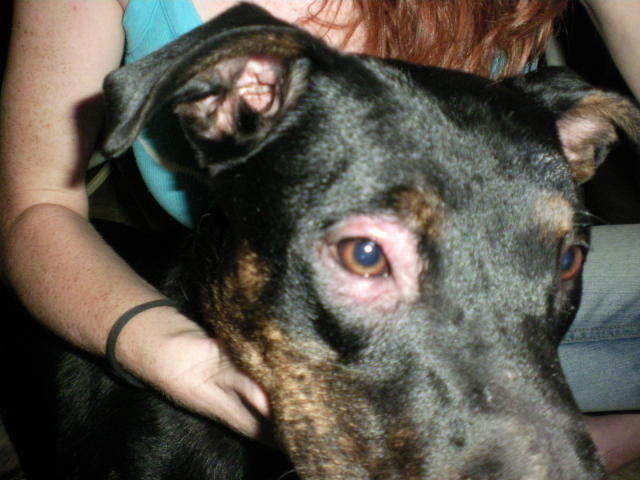 7 month old blue healer mix (Cloe)
Question
cloes right eye
Cloe was having really bad eye
7 month old blue healer mix (Cloe)
Question
cloes right eye
Cloe was having really bad eye
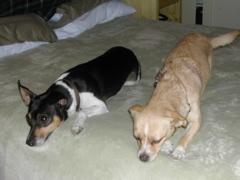 Vicious fighting between two females
Question
Alice and Julia
I have two female rescue dogs
Vicious fighting between two females
Question
Alice and Julia
I have two female rescue dogs
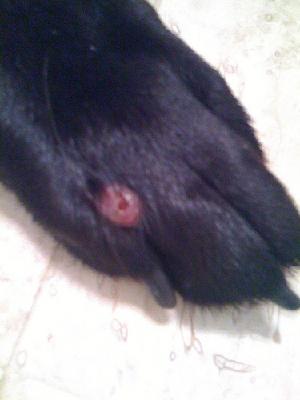 Redish bump between dogs toes
QuestionHello I have a three year old Australian Shephe
Redish bump between dogs toes
QuestionHello I have a three year old Australian Shephe
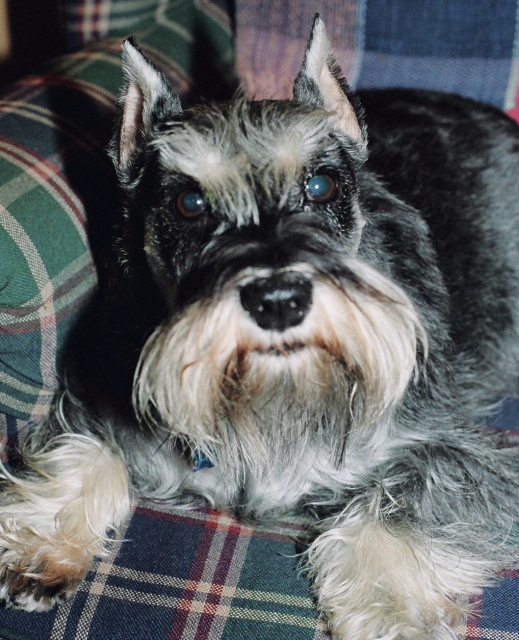 Miniature Schnauzer Flaky Skin
Question
Cicero
My 7-year-old miniature schnauzer Cicer
Miniature Schnauzer Flaky Skin
Question
Cicero
My 7-year-old miniature schnauzer Cicer
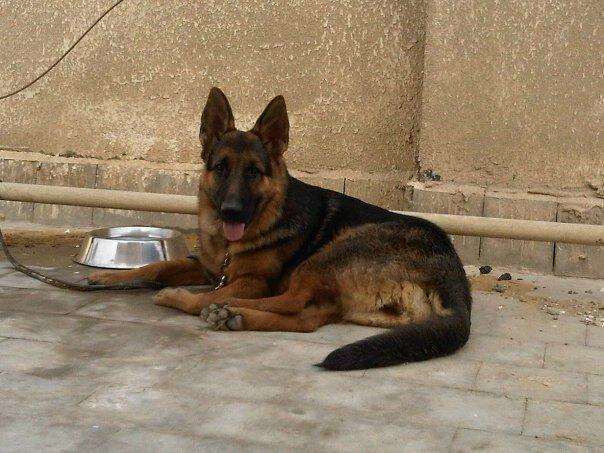 Delayed German Shepherd Heat
QuestionMy German Shepherd
QUESTION: I have a Ge
Delayed German Shepherd Heat
QuestionMy German Shepherd
QUESTION: I have a Ge